This is part 10 of a test of the Sony 12-24 mm f/4 FE lens. The test starts here.
So far in this report, I’ve been using the Sony 12-24 manually focused. I have found the AF accuracy of the Sony a7RII to be outstanding, except in the case of one particular lens, the Batis 85, whose longitudinal chromatic aberration (LoCA) seemed to cause the AF mechanism to sometimes optimize the red plane focusing, rather than my preferred green plane.
I picked a pretty easy target:
I used this test protocol:
- Sony 12-24/4, set to 12, 18, and 24 mm
- a7RII, firmware 4.0
- f/4, f/5.6, f/8, and f/11
- ISO 100
- AF-S
- Small spot size, which covers the whole target, not just the zone plate.
- Release priority: focus
- Manual exposure
- Wescott LED panels set to 5500 K.
- Electronic shutter
- Cognisys computer-driven focusing rail
- 32 exposures 4 mm apart
- Target distance at the center of the rail, about 2 m for the 24mm and 18 mm tests, and 1.3 m for the 12 mm tests.
- ARW exported as TIFF mosaiced file in dcraw (document mode)
- TIFFs cropped and raw channels selected in Matlab program
- MTF50 of cropped TIFFs measured with MTF Mapper
- Data assembled in Matlab
- Data plotted in Excel
The data at 12 mm:
What you are looking at is a standard measure of sharpness, MTF50, as measured in cycles per picture height (cy/ph) at the whole stops from f/2 through f/11. The orange line is the average, or mean, of the 32 exposures at each aperture. The gray line is that average, plus the standard deviation for the 32 exposures, and the blue line is the average minus that standard deviation. If the data were Gaussian (which it isn’t) two thirds of the values would be between the gray and the blue lines. In addition, I have plotted the best measurement of each 32 image set in yellow, and the worst in blue.
There is an obvious problem with the AF system af f/5.6, even with this easy target. Consistency at f/4 isn’t very good either.
The red channel looks the same. This lens has low LoCA at closer focusing distance, so whatever is going on is probably not what’s going on with the Batis 85, but the LoCA could be worse at 1.3 meters. Unlikely, but possible..
Now at 18 mm:
That looks more like what i’d expect. The spread at f/5.6 and f/4 is still pretty high.
Things look worse in the red channel.
Now at 24 mm:
About what we’ve been seing.
Similar to 18 mm.
The lens performance in the blue channel at 24 mm is pretty bad. Note that I had to change the bottom range of the vertical axis to get all the points on the chart. But it doesn’t look like we can blame that ono AF.
This lens has been difficult for me to get a handle one. It’s clearly a top-notch performer for a zoom, with a few quirks. Its performance seems to change quite a bit with focusing distance. Note that the poor f/4 at 24 mm sharpness that we saw when the lens was focused at 0.5 meter has completely gone away at 2 meters.
Another strange thing about the Sony 12-24. Most zooms need to be stopped down a couple of stops to be at their best on-axis. Not this one.
And one last caveat to those who aren’t familiar with these MTF50 charts. You can’t compare the absolute numbers unless the targets are the same, and I use several targets. Even the misfocused images in this series would be considered sharp by many people in many circumstances. However, the Sony a7RII/12-24 AF performance is in general worse than the GFX AF performance on any GFX lens I’ve tested so far, and I was giving the GFX a hard time for that. .
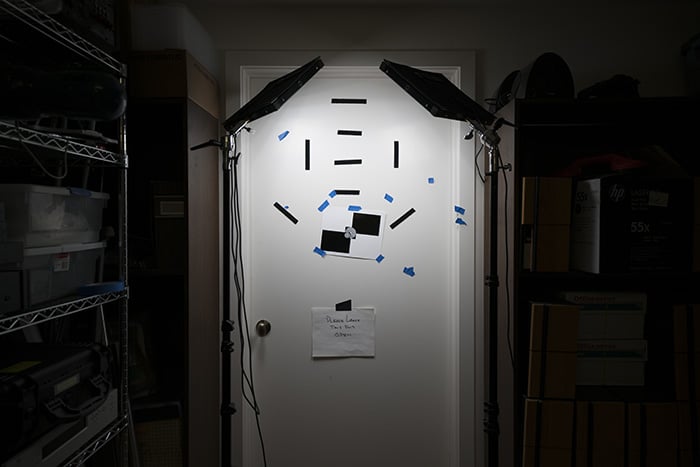
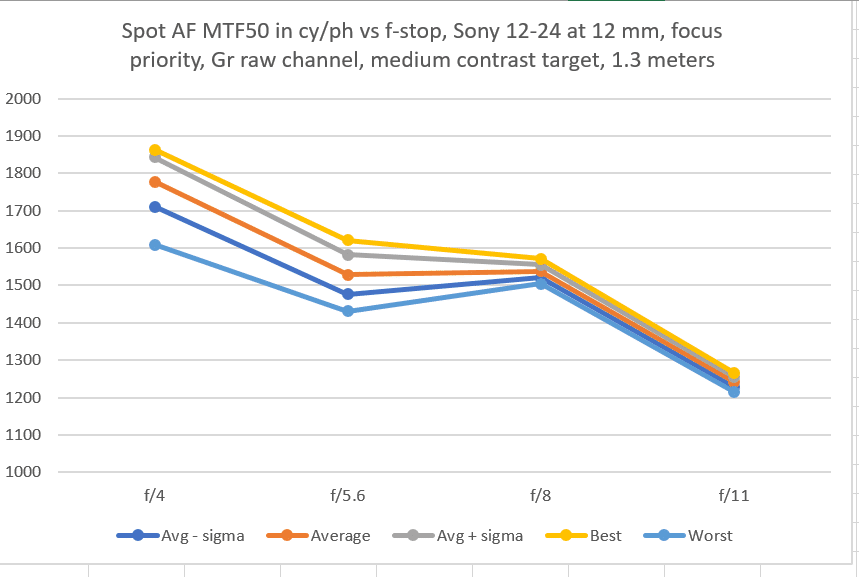
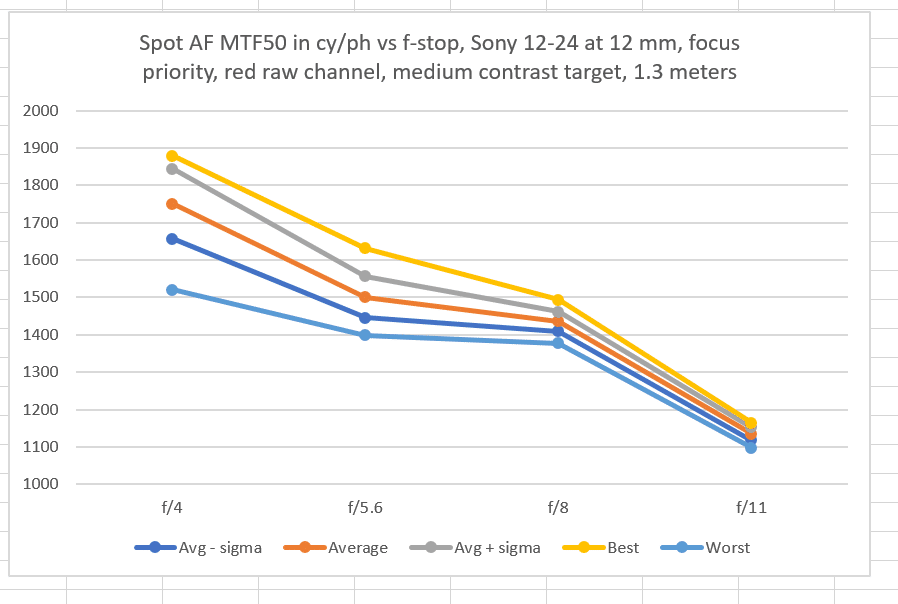

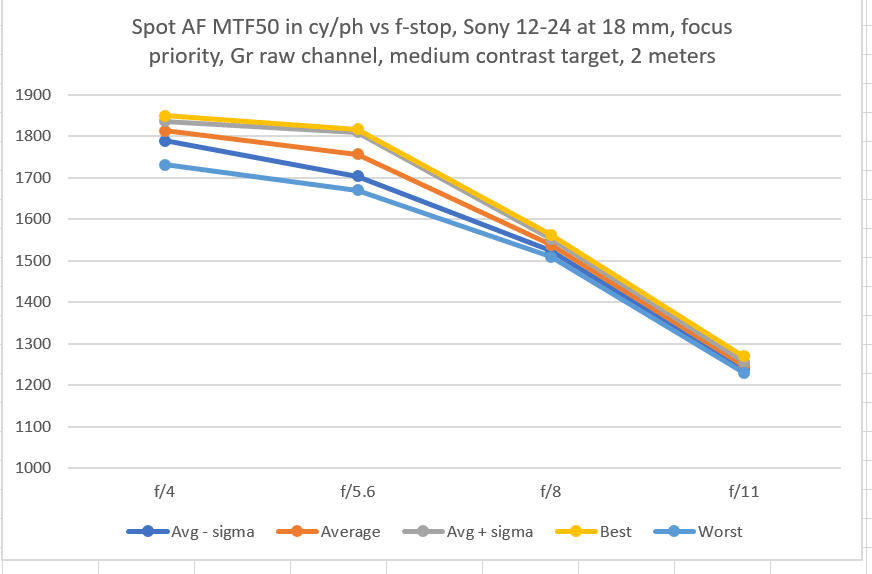
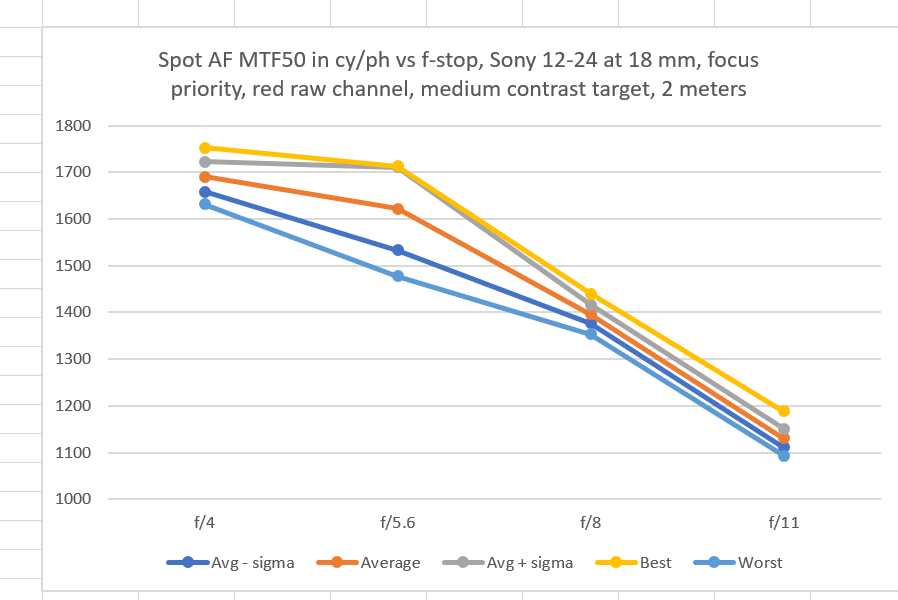
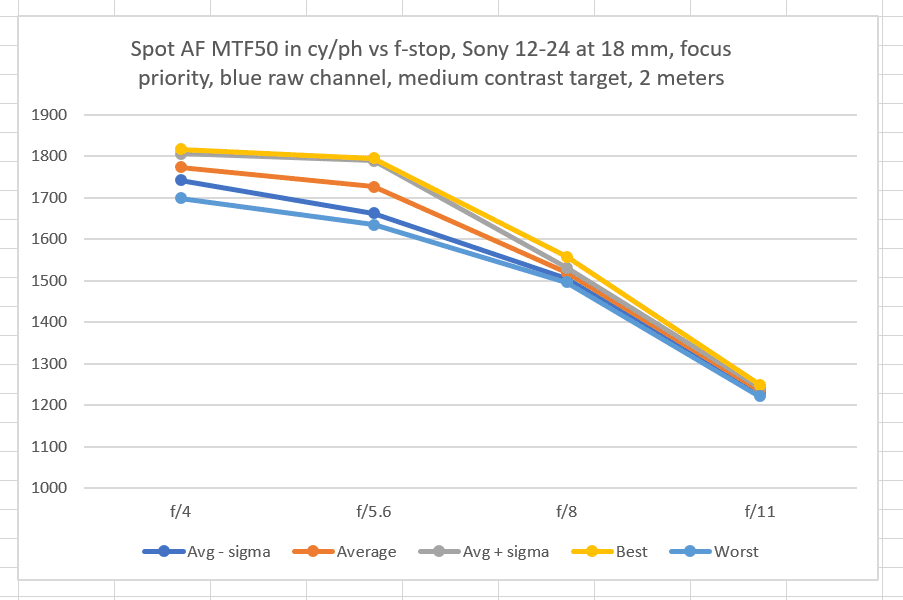
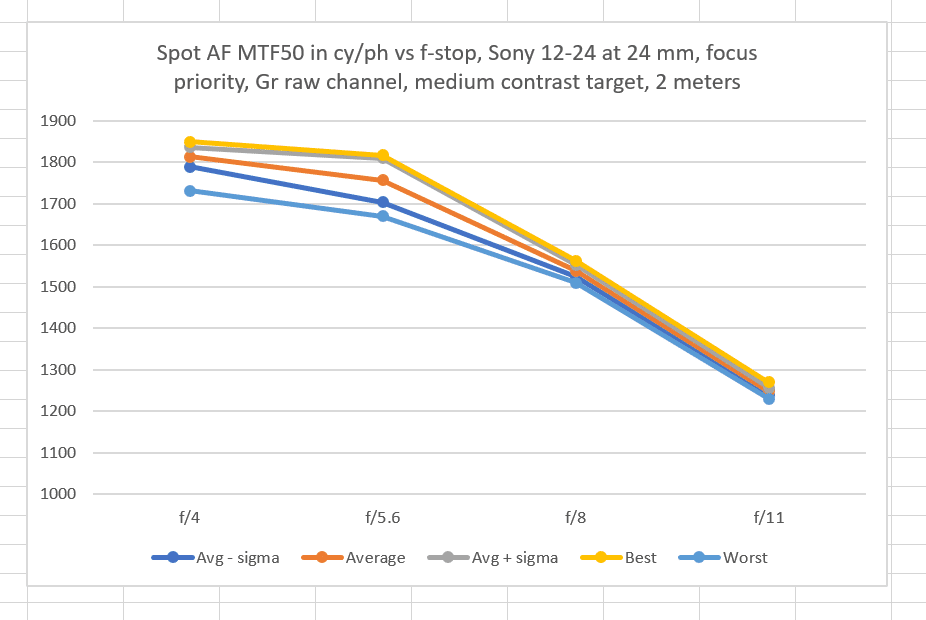
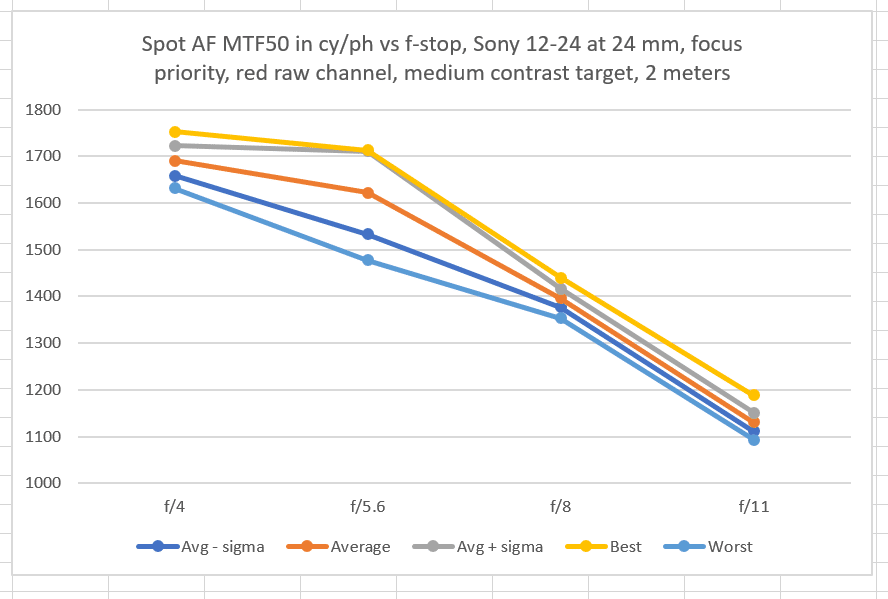
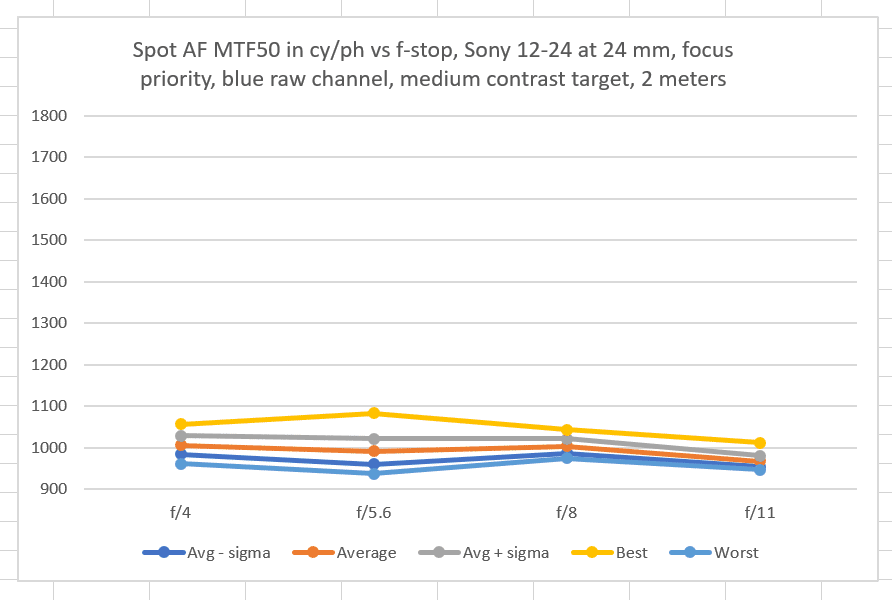
I wonder if some of the QC issue people are experiencing (it seems there’s a group of people who feel the lens is VERY soft) are due to these focusing issues. I wonder if the results would be different on your A9 (if you still have it). Of course they shouldn’t be (aside from a lower resolution overall) but something odd is going on here.
Do you really think that people are deciding how sharp the lens is based on autofocused test samples? That would be pretty silly, wouldn’t it? Good idea about testing on the a9.
I’ve just received a new 12-24 and after a few AF shots (at f4, dull day) noticed they weren’t in focus? Swichted to DMF and got good results. I’ve just tested it & wide open it’s ‘over shooting’. Becomes acceptable around f6.3? Thinking I should send it back?